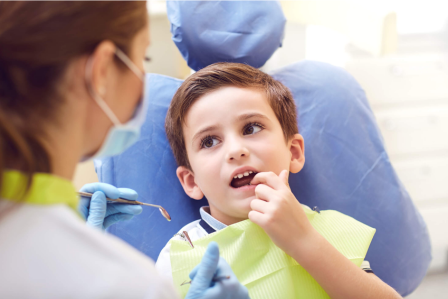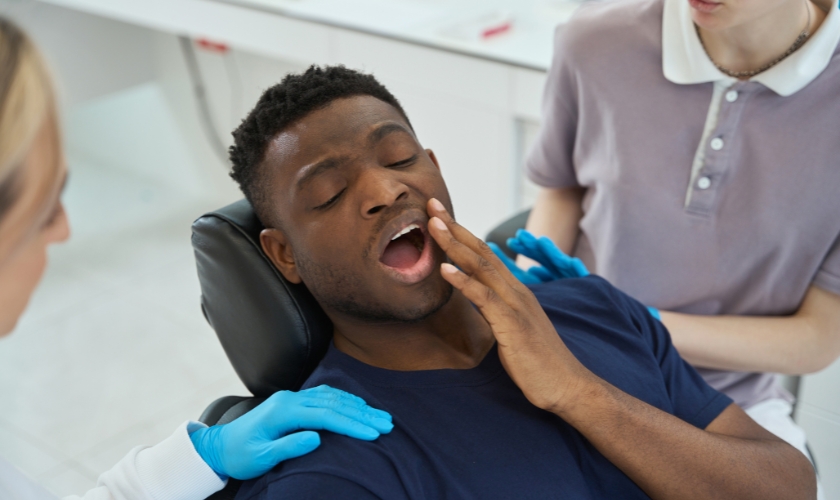
Dental emergencies in children can be frightening for both kids and parents. Imagine your child falling and chipping a tooth or feeling sudden pain from a cavity. These situations can arise unexpectedly, and knowing how to act quickly can make all the difference.
As a parent, being prepared is essential. Quick responses help alleviate pain and can prevent long-term damage to your child’s teeth.
You may wonder how to handle these emergencies effectively. Don’t worry; you’re not alone!
This blog will guide you through common dental emergencies, what immediate actions to take, and when to seek professional help. We’ll also share valuable tips on preventing dental issues and how to communicate dental safety to your child.
With the right information, you can tackle these situations confidently, ensuring your child’s smile stays bright and healthy. Let’s dive in and empower ourselves with knowledge about dental emergencies in children!
Common Dental Emergencies in Kids
Dental emergencies can happen when you least expect them. Children often explore their environment, leading to accidents. Recognizing common emergencies can help you respond quickly and effectively. Here are some frequent dental issues you might encounter:
- Knocked-out teeth: This often occurs from falls or sports injuries.
- Fractured teeth: Biting down on hard objects or playing rough can cause chips or breaks.
- Severe pain: Pain may stem from cavities, infections, or trauma.
As a parent, watch for these signs:
- Swelling around the mouth or gums.
- Bleeding from the mouth or persistent pain.
- Difficulty eating or talking.
First Aid Steps for Dental Injuries
When a dental emergency strikes, quick action matters. Knowing how to provide first aid can help your child feel more comfortable and reduce complications. Follow these steps for common situations:
Knocked-out teeth:
- Handle the tooth carefully. Hold it by the crown, avoiding the roots.
- Rinse gently with water to clean off dirt.
- Try to reinsert it in the socket if possible. If not, place it in a glass of milk or saline solution.
Fractured teeth:
- Rinse the mouth with warm water to clean the area.
- Apply a cold compress to reduce swelling.
- Seek dental care promptly.
Cuts or injuries:
- Control bleeding by applying gentle pressure with a clean cloth.
- If bleeding persists, consult a healthcare professional.
These first aid steps can stabilize the situation until you reach an emergency dentist in Valley Center, KS.
When to Call for Emergency Dental Care?
Knowing when to seek emergency dental care can be challenging. Not all situations require immediate attention, but some certainly do. Here’s how to assess whether it’s time to call your dentist:
- Visible damage: If you see significant breaks or missing teeth, get help immediately.
- Pain levels: Persistent, severe pain often signals an urgent issue. If over-the-counter pain relief doesn’t help, consult a dentist.
- Swelling: If swelling increases or spreads, it may indicate an infection. Seek prompt dental evaluation.
Understanding these criteria helps you decide when to contact a dentist. Quick action can prevent complications and keep your child’s smile healthy.
Proactive Steps to Prevent Dental Emergencies
Prevention is the best approach to dental emergencies. Implementing a few strategies can help protect your child’s smile. Here’s how to reduce the risk:
Child-proofing your home:
- Remove sharp objects and secure heavy furniture.
- Use gates to block access to hazardous areas.
Safe play areas:
- Create soft play spaces where kids can run and play without the risk of injury.
- Monitor their activities, especially during rough play.
Protective gear:
- Encourage your child to wear mouthguards during sports. These can significantly reduce the risk of dental injuries.
Engaging Your Child in Dental Safety Conversations
Talking to your child about dental safety can be fun and informative. It’s crucial to instill good habits early. Here are some engaging ways to discuss dental hygiene:
- Make it a game: Create a fun quiz about dental health. Reward correct answers with stickers or small prizes.
- Storytime: Read books that focus on dental care, making it relatable and exciting for them.
- Involve them in brushing: Let them choose their toothbrush and toothpaste flavors. Making it personal encourages responsibility.
Regular conversations about dental hygiene reinforce its importance. When children understand the “why” behind good habits, they are more likely to adopt them. A proactive approach to dental safety sets the foundation for a lifetime of healthy smiles!
Dental emergencies in children can be daunting, but knowing how to act quickly can make all the difference. By recognizing the signs and taking proactive measures, you ensure your child’s smile remains healthy and bright. Remember, open communication about dental safety is key. If you face a dental emergency, trust Newton Dental Studio for prompt, expert care. Your child’s smile deserves the best! Book your appointment today!!


